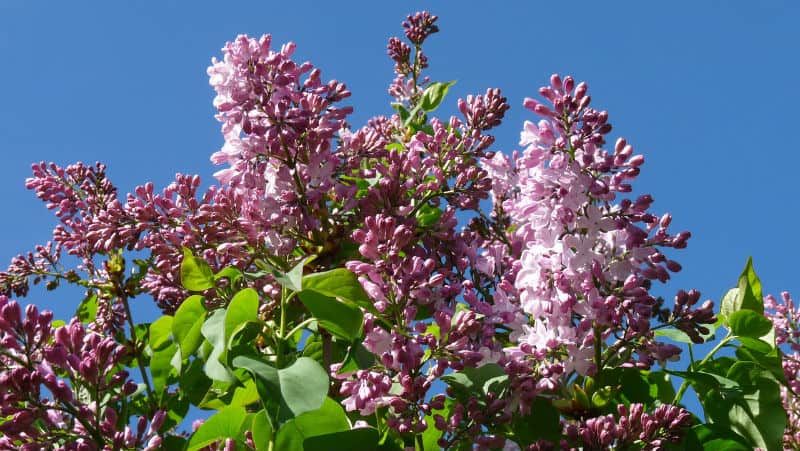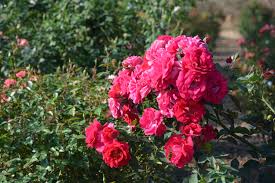If you love beautiful flowers and want to add a touch of color to your garden, the Texas Lilac Tree is an excellent choice. This lovely plant, also known as Vitex agnus-castus, brings a splash of purple and a pleasant fragrance to your outdoor space. In this guide, we will explore everything you need to know about growing and caring for the Texas Lilac Tree. From planting to maintenance, we’ll cover it all so you can enjoy this stunning plant for years to come.
What is the Texas Lilac Tree?
The Texas Lilac Tree, also called the Chaste Tree, is a deciduous shrub or small tree native to the Mediterranean region. It’s not really a lilac but has similar lovely purple flowers that give it a lilac-like appearance. It grows well in warm climates and is known for its long-lasting blooms and aromatic foliage. This tree can reach up to 15 feet in height and width, making it a beautiful addition to any garden or landscape.
Characteristics of the Texas Lilac Tree
The Texas Lilac Tree has several features that make it special:
- Flowers: The tree produces beautiful, fragrant purple flowers that bloom from late spring to early fall. The flowers grow in long, spiky clusters that attract bees and butterflies.
- Leaves: The leaves are large, palm-shaped, and green with a hint of silver. They provide a nice contrast to the purple flowers.
- Growth: It can grow up to 15 feet tall and wide, though it can be pruned to a smaller size if desired.
- Fruit: The tree produces small, dark brown berries that are not edible but add interest to the plant.
How to Plant the Texas Lilac Tree
Planting a Texas Lilac Tree is relatively simple, but there are a few important steps to follow to ensure its success.
Choosing the Right Location
The Texas Lilac Tree loves full sun, so pick a spot in your garden that gets at least 6-8 hours of sunlight each day. It prefers well-drained soil, so avoid areas where water tends to collect. If your soil is heavy or clay-like, you might need to amend it with compost or sand to improve drainage.
Planting Process
- Prepare the Soil: Loosen the soil in the planting area and mix in some compost. This will help the tree’s roots establish themselves.
- Dig the Hole: Dig a hole that is twice as wide as the root ball of your Texas Lilac Tree and about the same depth.
- Place the Tree: Gently remove the tree from its container and place it in the center of the hole. Make sure the top of the root ball is level with the ground surface.
- Backfill and Water: Fill the hole with soil, tamping it down gently as you go. Water the tree thoroughly after planting to help settle the soil around the roots.
Watering After Planting
After planting, keep the soil consistently moist but not waterlogged. Water the tree deeply once a week during the growing season. Once established, the Texas Lilac Tree is fairly drought-tolerant, but it will still benefit from occasional deep watering during dry spells. You can also read Exploring Gaurargo Platinum Ranch in C Texas.
Caring for Your Texas Lilac Tree
To keep your Texas Lilac Tree healthy and vibrant, regular care is essential. Here are some tips for maintaining this beautiful plant:
Pruning
Pruning helps maintain the shape of the tree and encourages more blooms.
- When to Prune: The best time to prune is in late winter or early spring before new growth begins.
- How to Prune: Remove any dead or damaged branches and thin out the center of the tree to allow light and air to reach the inner branches. You can also trim the tree to control its size and shape.
Fertilizing
Texas Lilac Trees benefit from regular feeding to promote healthy growth and blooms.
- Type of Fertilizer: Use a balanced, slow-release fertilizer that is high in phosphorus to encourage flowering.
- Application: Apply the fertilizer in early spring and again in mid-summer. Follow the manufacturer’s instructions for the correct amount.
Mulching
Mulching helps retain moisture, regulate soil temperature, and suppress weeds.
- What to Use: Organic mulches like wood chips or shredded leaves work well.
- How to Apply: Spread a 2-3 inch layer of mulch around the base of the tree, keeping it a few inches away from the trunk to prevent rot.
Pest and Disease Control
While the Texas Lilac Tree is relatively pest-resistant, it can occasionally face issues with insects or diseases.
- Common Pests: Watch for aphids, scale insects, or spider mites. You can control these pests with insecticidal soap or neem oil.
- Diseases: The tree can be susceptible to fungal diseases like powdery mildew. Ensure good air circulation around the tree and avoid overhead watering to prevent fungal issues.
Troubleshooting Common Problems
Even with the best care, you might encounter some issues with your Texas Lilac Tree. Here’s how to address common problems:
Yellowing Leaves
If the leaves of your Texas Lilac Tree turn yellow, it could be a sign of overwatering or poor drainage.
- Solution: Check the soil moisture and adjust your watering schedule if necessary. Ensure that the tree is planted in well-drained soil.
Poor Flowering
If your tree is not producing as many flowers as expected, it might not be getting enough sunlight or nutrients.
- Solution: Make sure the tree is in a sunny location and consider applying a phosphorus-rich fertilizer to boost blooming.
Wilting
Wilting leaves can be a sign of drought stress or root issues.
- Solution: Check the soil moisture and water the tree thoroughly if it’s dry. Also, inspect the root system for signs of disease or damage.
Benefits of Growing the Texas Lilac Tree
In addition to its beauty, the Texas Lilac Tree offers several benefits:
- Attracts Wildlife: The flowers attract bees, butterflies, and hummingbirds, making your garden a haven for pollinators.
- Low Maintenance: Once established, the tree is relatively easy to care for and requires minimal maintenance.
- Fragrance: The flowers have a lovely scent that enhances your garden’s ambiance.
Conclusion
The Texas Lilac Tree is a fantastic choice for adding color and charm to your garden. With its stunning purple flowers, pleasant fragrance, and relatively easy care requirements, it’s a plant that can bring joy and beauty to any outdoor space. By following the tips and guidelines in this guide, you can ensure that your Texas Lilac Tree thrives and continues to be a focal point in your garden for years to come.





